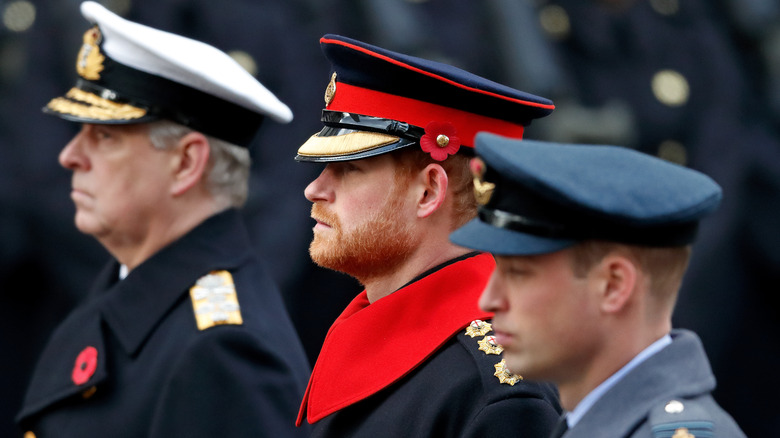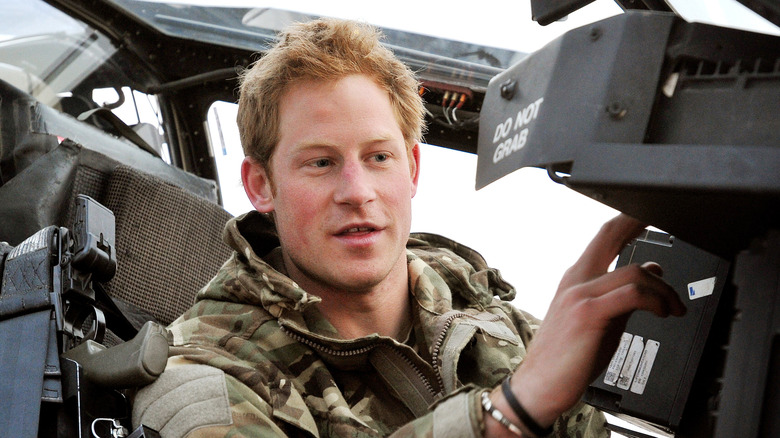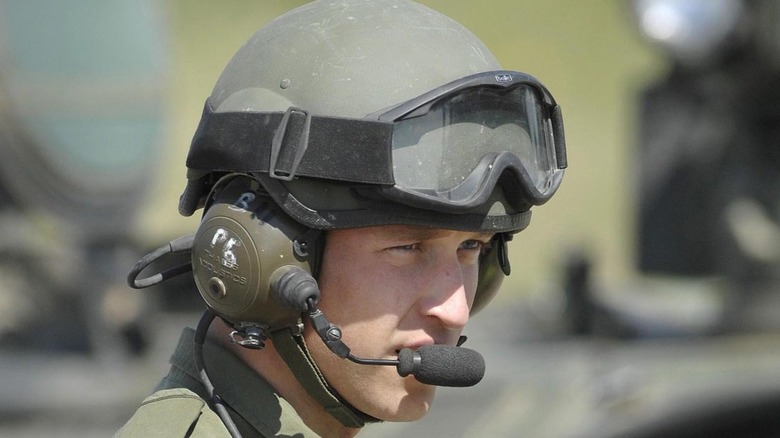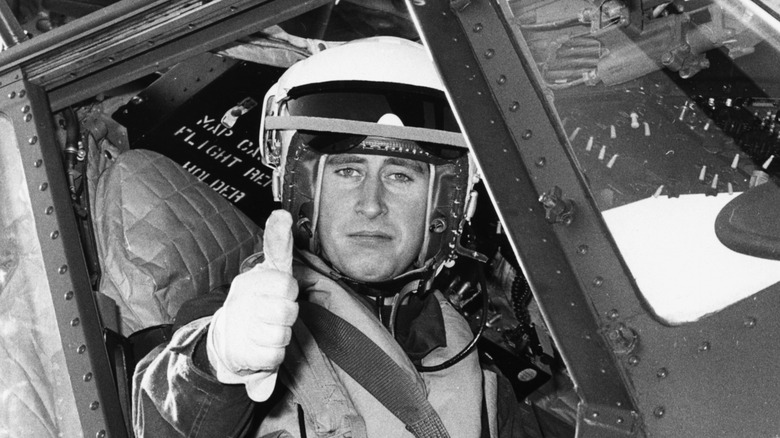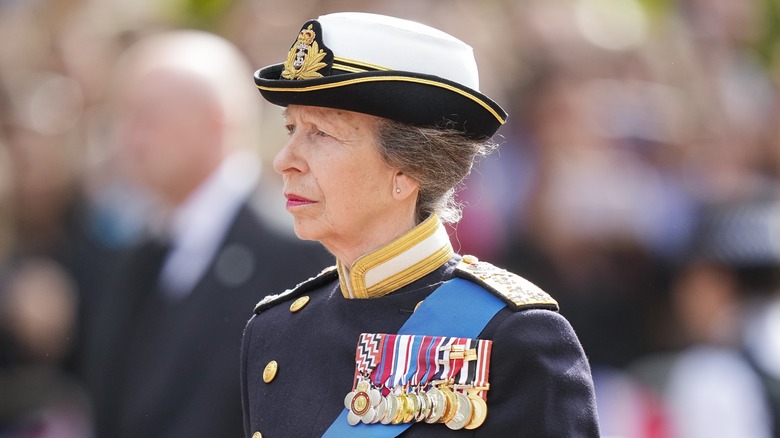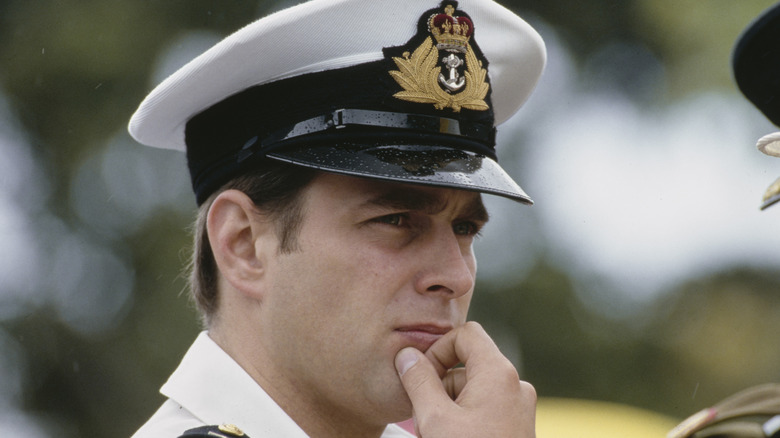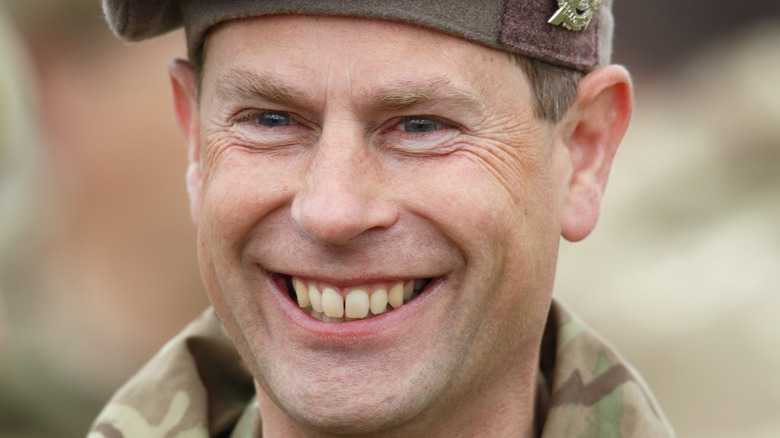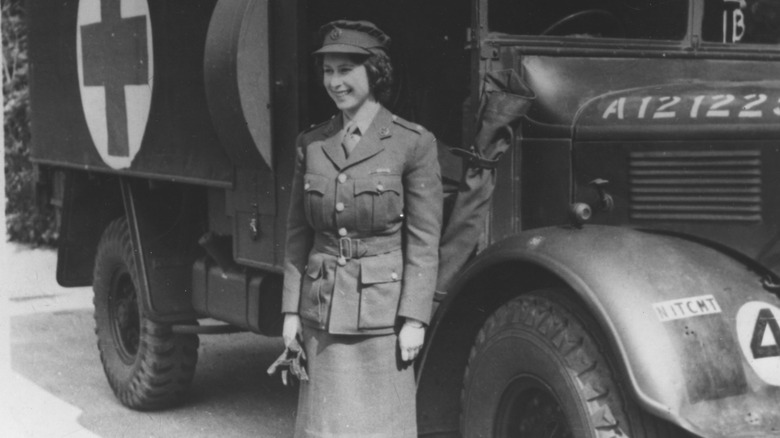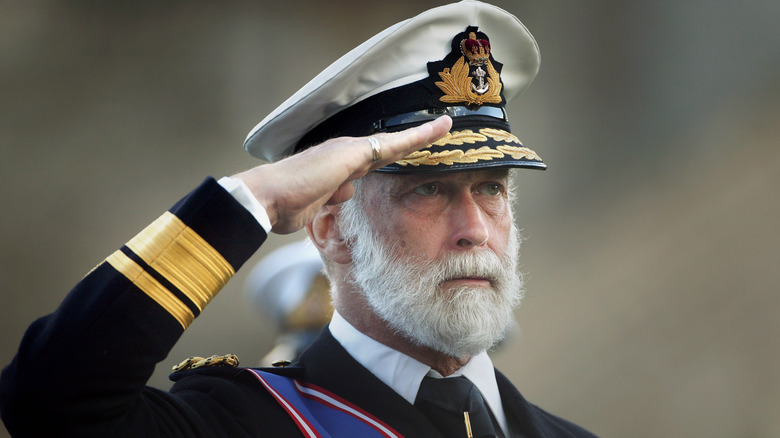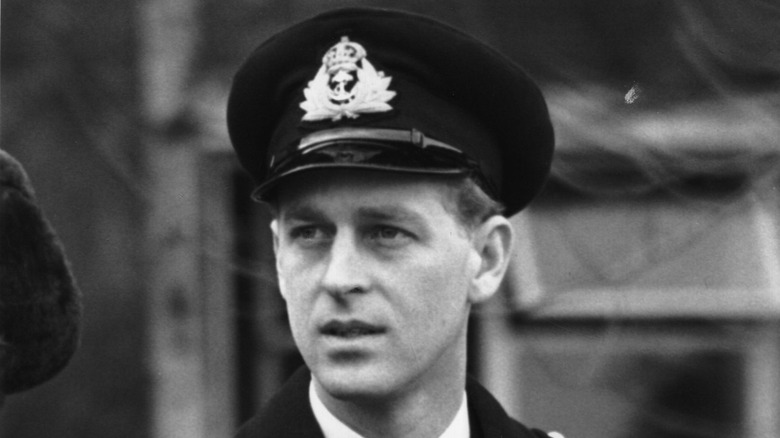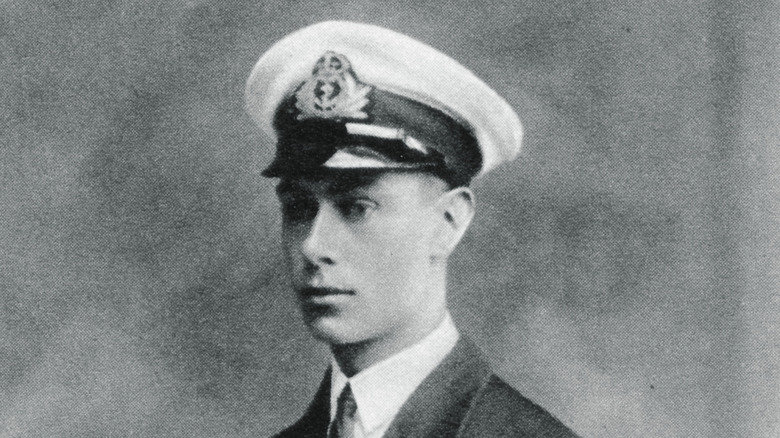Royal Family Members Who Served In The Military
Serving in the military has been a long-held practice for many British royals. From the most recent royal member of the military, Prince Harry, to his great-grandfather King George VI, royal family members have shown their support for their country by joining the armed forces all throughout British history. Although the tradition of a monarch leading their troops into battle has been left to the past, the British monarchy has found modern ways to support the military.
From visiting troops to providing resources for veterans, the royals bring visibility to those who fight for their country. This link has been well-preserved throughout history even though the political power of the monarchy has changed. Did you know that, to this day, soldiers who join the British Army still swear an oath of allegiance to the king and his successors? Needless to say, the relationship between the crown and the military is significant.
Although it is true that many royals will receive honorary military titles regardless of whether or not they have actually served, there are many members of the royal family who joined the armed forces and established their own military careers. Here is an exploration of the four latest generations of royals who served in the military.
Prince Harry
The most recent royal to serve in the military has been Prince Harry, Duke of Sussex. He began training to be an officer cadet at the Royal Military Academy Sandhurst in May 2005. In January 2006, it was announced that Harry would be joining the Blues and Royals, which is the second-most senior regiment in the British Army. He became an officer in April 2006 and was deployed to Afghanistan in 2007. However, his tour was cut short when the media revealed his whereabouts, and concerns about his safety arose. In February 2008, it was publicly revealed that Prince Harry had been deployed to Afghanistan for at least two months (per The Guardian).
After receiving a promotion to lieutenant with the Blues and Royals in April 2008, Prince Harry retrained with the Army Air Corps as an Apache pilot. In 2012, Harry once again was deployed to Afghanistan, this time as a helicopter co-pilot and gunman. After serving for 10 years and completing two tours of Afghanistan, Prince Harry retired from the armed forces in 2015.
Because he stepped down as a working royal, Prince Harry wasn't allowed to wear his uniform at the funeral of his grandmother, Queen Elizabeth II. In addition, he lost his honorary military titles which included being captain general with the Royal Marines (per Metro). However, King Charles III did grant special permission for Harry to wear his military uniform during the vigil.
Prince William
During the seven-and-a-half years of Prince William's military career, the crown prince served in the Household Cavalry, the Royal Air Force, and the Royal Navy. In December 2006, William graduated from the Royal Military Academy Sandhurst. To continue the parallel between the two brothers, William began as an officer in the Blues and Royals. Shortly after completing his time with the Blues and Royals, Prince William began training with the Royal Air Force to become a pilot like his father, King Charles III. In 2008, Prince William joined the Royal Air Force and the Royal Navy, and a year later in 2009, he became a search and rescue pilot.
Unlike Prince Harry, Prince William did not serve on the front lines. According to People, although Queen Elizabeth II reportedly wanted both of her grandsons to serve in the military, there was a greater risk associated with Prince William serving on the front lines that was unacceptable.
King Charles III
When King Charles III became the ruling monarch of the United Kingdom, he also became commander-in-chief of the British military. However, before he inherited this role as the head of the armed forces, Charles followed in the footsteps of the monarchs who came before him and served in the military. While studying at Cambridge University as the Prince of Wales, Charles began his military education by receiving flying lessons from the Royal Air Force. In 1971, he flew to Royal Air Force College Cranwell to become a jet pilot. After he completed that course, he attended Britannia Royal Naval College during the same year.
Charles began his active military service onboard the HMS Norfolk, where he was able to gain experience at sea during the Cold War. While he was in the Navy, Charles was also able to practice his piloting skills. Qualifying to be a helicopter pilot in 1974, Charles then flew with a naval air squadron.
In 1976, the future King Charles III concluded his naval career. He held the rank of commander. He has since maintained a strong bond with the military in the years following his return to royal duties, and is now, as stated earlier, the commander-in-chief of the entire operation.
Princess Anne
Princess Anne's military service has been a popular topic of discussion ever since she wore a military uniform to the funeral of her mother, the late Queen Elizabeth II, as well as an elaborate military outfit for the coronation of her brother King Charles III. These appearances have made people wonder if Princess Anne was ever in the military. However, she has actually never served in the armed forces.
Like many other royals, Princess Anne holds several honors and titles, and thus appears in her military uniform and medals on royal occasions. For instance, Princess Anne was seen on Coronation Day wearing a Blues and Royals uniform. At the queen's funeral, she wore a Royal Navy uniform to reflect her title of admiral, which she was given in 2012 (via LBC). Not only does she hold this naval title, but she also received the titles of air chief marshal in the Royal Air Force and general in the British Army in 2020.
Though she has not served in the armed forces, Princess Anne is dedicated to supporting active military members as well as veterans within the United Kingdom and overseas, often paying them visits to learn about their work.
Prince Andrew
Queen Elizabeth II's third child, Prince Andrew, enrolled in Britannia Royal Naval College in 1979. Like his father, Prince Philip, Andrew aimed to become a naval officer. According to People, Prince Philip was the one to give Prince Andrew his pilot's wings in 1981.
Andrew was then assigned to the HMS Invincible, where he operated as a helicopter pilot. Andrew served in the Falkland Islands War in 1982 where the HMS Invincible was assigned. He flew helicopter missions during the war and found recognition for his service. After a military career that lasted 22 years, Prince Andrew retired from active service in 2001. He held the rank of commander and was given the honorary rank of vice admiral of the Navy in 2015.
However, the honor and recognition that Prince Andrew received from his time serving in the armed forces have since been tarnished as this controversial royal has experienced a major fall from grace. Per BBC, Prince Andrew has since been stripped of his military titles. One of these military titles that was taken away was colonel of the Grenadier Guards, which is a very well-respected infantry regiment in the British Army.
Prince Edward
The youngest of Queen Elizabeth II and Prince Philip's children, Prince Edward briefly became an officer cadet in the Royal Marines in the 1980s but never actually served in the military.
However, like his sister and the other royal family members, Prince Edward holds several honorary titles and wears an official military uniform as a working royal during ceremonial events. During his mother Queen Elizabeth II's funeral, Prince Edward wore military regalia. He holds the rank of royal honorary colonel of the Royal Wessex Yeomanry and the London Guards (per The Royal Household).
Along with his eight military titles, Prince Edward also now holds the title of Duke of Edinburgh, which previously belonged to his late father, Prince Philip. The title was given to him on his 59th birthday by his older brother King Charles III. Reflecting the commitment both his father and mother upheld to the armed forces during their lives, Prince Edward regularly visits troops to show his support for those who defend their nation.
Queen Elizabeth II
The late Queen Elizabeth II maintained a very strong connection to the armed forces throughout her reign as queen. However, this unique relationship with the military began before she assumed the throne, when she was a princess.
In 1945, Queen Elizabeth II (who was Princess Elizabeth of York at the time) joined the Auxiliary Territorial Service (ATS) and became the first female royal family member to serve full-time as a member of the armed forces. Learning to operate and maintain vehicles were some of the duties Elizabeth took on as she did her part to aid troops during World War II. This decision to join the ATS reflected the decision that many women made at the time to contribute to the war effort.
Queen Elizabeth II supported the military throughout her reign, with her time serving in the armed forces undoubtedly creating a foundation of respect and empathy. Earning a promotion to junior commander during her time in the military, Queen Elizabeth II would go on to receive many honors and titles during her life, including head of the armed forces.
Prince Michael of Kent
First cousin of the late Queen Elizabeth II, Prince Michael of Kent may not be the most well-known member of the royal family, but he has had quite the military career.
In 1961, Prince Michael of Kent enrolled in Royal Military Academy Sandhurst when he was 18 years old. Two years later in 1963, he became a part of the 11th Hussars (which was then known as Prince Albert's Own). His military career lasted 20 years. During those 20 years, he completed tours in places such as Germany, Hong Kong, and Cyprus. In addition, he served on the Defense Intelligence Staff, where he was appointed on numerous occasions. When he retired in 1981, he held the rank of major.
Since retirement, Prince Michael of Kent has received several honorary titles. In 2006, he became the commodore-in-chief of the combined Maritime Reserves as well as the honorary vice admiral of the Royal Naval Reserve. In addition, he was promoted to honorary air marshal of the Royal Air Force in 2012. Prince Michael is also the senior colonel of the King's Royal Hussars and the royal honorary colonel of the Honourable Artillery Company. Though Prince Michael and his wife are not working royals, they do occasionally attend events where they represent the royals.
Prince Philip
Prince Philip was a well-respected and distinguished member of the Royal Navy during his military career and long after his retirement. The late Duke of Edinburgh entered Britannia Royal Naval College and became a cadet in 1939. He was successful, even earning a prize for "best cadet." In 1940, Philip followed his passion for life at sea when he joined the battleship HMS Ramillies and spent six months in Sri Lanka before joining the battleship HMS Valiant in 1941, where he was in charge of the ship's searchlight. From 1942 to his return to the United Kingdom in 1946, Prince Philip served as first lieutenant.
While stationed in Malta in 1950, Philip became lieutenant commander. He remained an active member of the Royal Navy until 1952, when his father-in-law King George VI died and Queen Elizabeth II assumed the crown. However, despite the end of his active naval career, the Duke of Edinburgh maintained his interest in and support of the armed forces — especially the Royal Navy.
On his 90th birthday in 2011, Queen Elizabeth II made her husband lord high admiral. In addition to his titles in the Navy, the Duke of Edinburgh was the field marshal and marshal of the Royal Air Force, colonel-in-chief of the Army Cadet Force, and air commodore-in-chief of the Air Training Corps. He supported troops, veterans, and their families in every branch of the military until his death in 2021.
King George VI
The tradition of royal family members serving in the military includes Queen Elizabeth II's father, King George VI. Before he was king, he served his country as a member of the Royal Navy and the Royal Naval Air Service during World War I.
When he was just 13, the future king enrolled in the Royal Naval College, Osborne. He joined the HMS Collingwood as a midshipman in 1913. While he was onboard the HMS Collingwood, he witnessed the Battle of Jutland in 1916. As The Royal Household points out, he was "the only British sovereign to have seen action in battle since William IV." After the war concluded, King George VI served in the Royal Air Force, where he acquired his pilot's wings.
His military service ended in 1920 when he became the Duke of York and had to leave the armed forces in order to attend to royal duties. He became king in 1936 after the abdication of his brother. King George VI would become a symbol of strength and resilience during World War II. Ten days after D-Day in 1944, he visited the army on the beaches of Normandy. As a veteran of World War I, King George VI felt a strong dedication toward honoring his armed forces, often visiting troops at home and abroad during and after the war.
